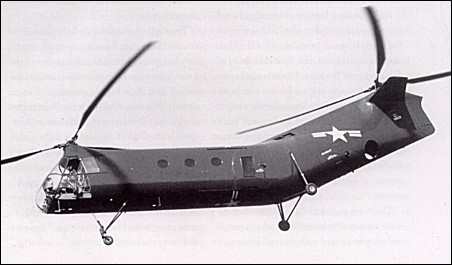
| Piasecki PV-17 / HRP-2 1962 |  |
 |

| Piasecki PV-17 / HRP-2 1962 |  |
 |
|
The much-improved HRP-2 (PD-17) featured a streamlined metal fuselage offering better visibility for two pilots, who now sat side by side ahead of the front rotor. The most significant improvement was the HRP-2's all-metal stressed-skin construction. Compared to it, the HRP-1 (with or without its balloon-cloth covering) looked like a dinosaur. It used the same engine and rotors as the HRP-1, but was slightly shorter and lighter. If its semi-monocoque fuselage had been built like that of an airplane, it would have been too heavy. The Piasecki team used a thinner skin and had the longitudinal members shaved down, as well as other extruded parts that could not be manufactured thinly enough. Jim Ryan lifted the new Navy helicopter into the air for the first time October 29, 1949. While it was indeed better than the HRP-1, the fast pace of helicopter technology had already passed it by, and better helicopters could now be built. With a gross weight of 3260kg, the HRP-2 was simply too light to offer much utility and only five were built. J.P.Spencer "Whirlybirds: A History of the U.S. Helicopter Pioneers", 1998
|